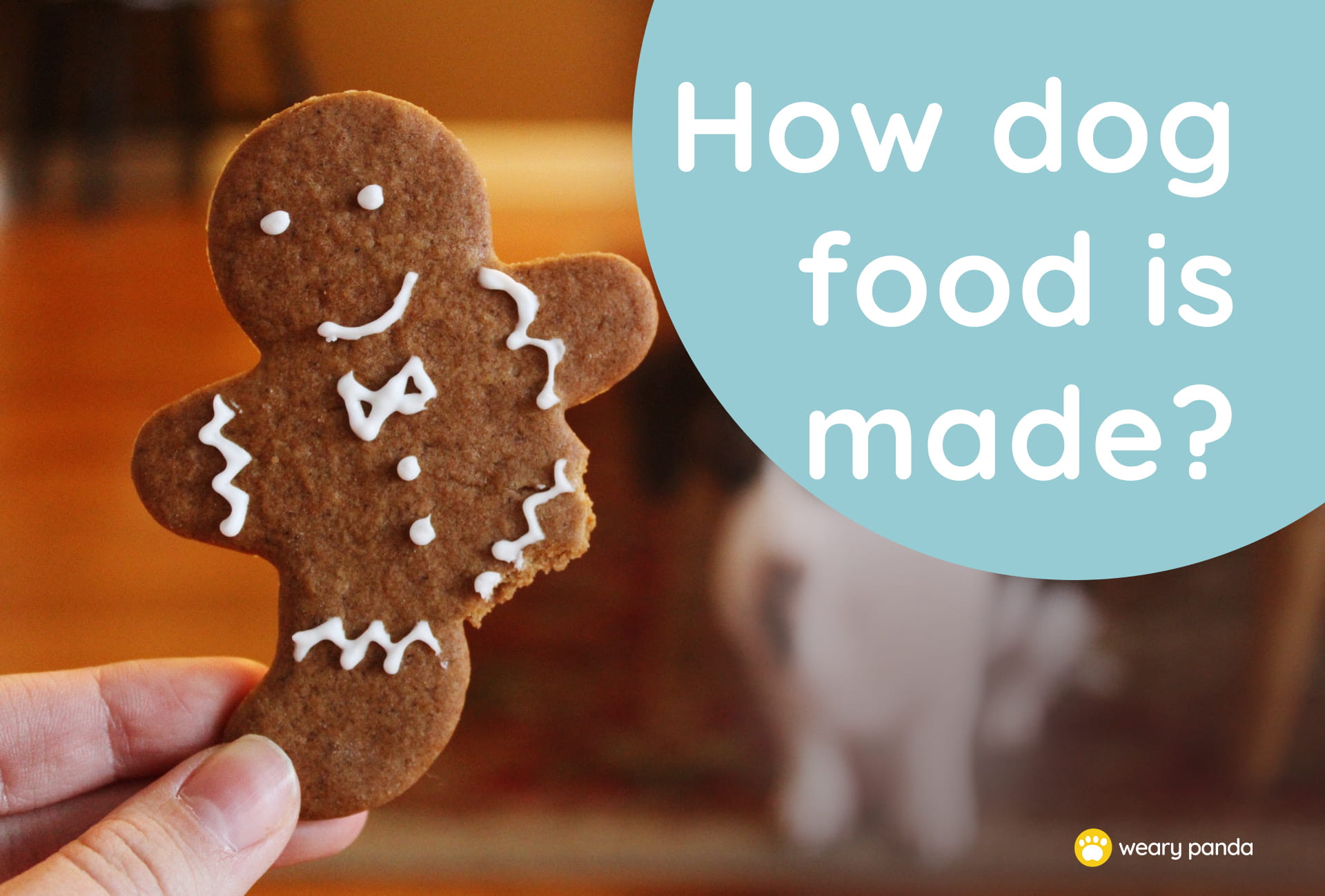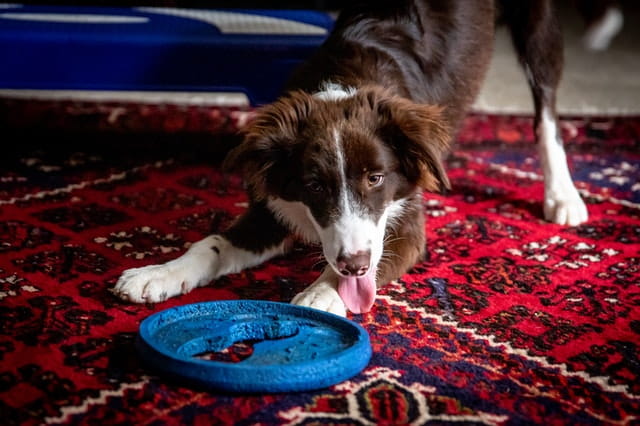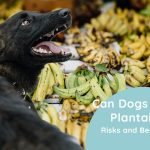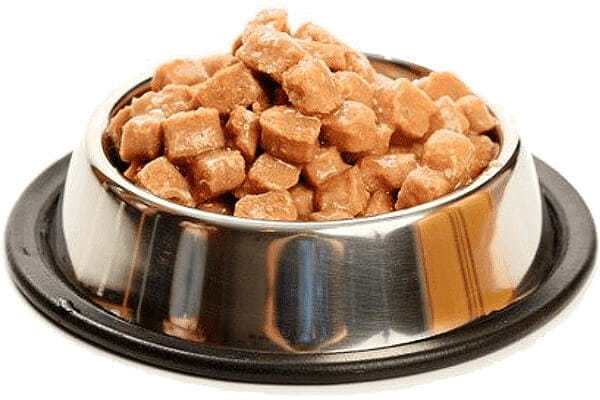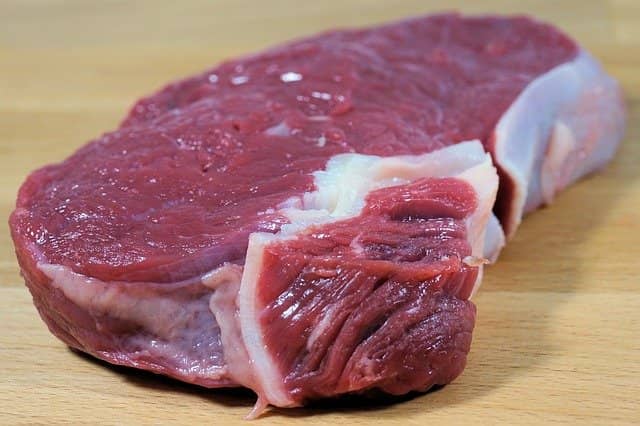Do you ever wonder how dog foods are made? When you feed your dog, you always see that excitement on their face. Then you put that scoop or open that can and they wiggle around to show their joy. By giving them a good diet is another way to show your love to your pet.
As a pet owner, you should know the different types of dog food you serve to your dogs. What is inside each pouch and how they differ.
Why do dogs like it like humans do to pizza?
First, let’s take a look at the different types of dog food. Then let’s see how each of them differs by its ingredients.
There are five types of dog foods:
- Kibble or dry
- Semi-Moist
- Canned or wet
- Home-Cooked
- Raw
Related Topic:
http://wearypanda.com/what-dog-breed-is-for-me/
Kibble
Kibble was first discovered in the 1860s. James Spratt launched the biscuit in London. He was the world’s first large-scale manufacturer of dog biscuits. Kibble is an affordable type of dog food. It is made from pulverized ingredients(meats, vegetables, grains) to produce bite-size pieces.
For most dog owners, this is the most convenient dog food available. One of the advantages is it is easier to feed and manage by portions.
Semi-Moist
Semi-moist dog foods are made from flavor enhancers, artificial colors and preservatives. This is not a good option for your dog’s regular diet but it can be given occasionally as a form of a treat. Unlike kibble, semi-moist dog food has a lesser healthy ingredient. It would make it not suitable for your dog’s diet.
Semi-moist dog food generally contains more sugar and sodium than canned and kibble.
Canned
Canned or wet dog food contains more meat protein than dry/kibble. It’s also more expensive due to the high water content than kibble. This is more affordable than the semi-moist.
It is commonly given to dogs with teeth issues.
This dog food is a mixture of animal meat, plant matter, vitamins, and other ingredients into a processed, pre-cooked stew or loaf.
Home-Cooked
Most of the home-cooked dog food ingredients are human whole-foods. Generally, this contains ingredients that can healthily be eaten. The advantage of this dog food method is the ability to know the ingredients you add. You will know if your dog has the necessary nutrients by making it on your own. It can be time-consuming, some owners prefer commercial foods because of convenience.
Is it cheaper to make your own dog food?
Homemade dog food can be less expensive than commercial. It depends on what’s inside your dog food. Buying the ingredients in bulk and making your own could save you a ton. Commercial dog foods undergo the same process as any other business. The cost of production and marketing is one of the key factors affecting its price on the market.
Raw
Raw dog food comprises meat, bone, organ, vegetables, supplements, grain. Dogs have strong stomach acids that make them capable of digesting raw food like meats.
Most of raw dog food consists of:
- Muscle meat (turkey, beef, chicken, lamb, pork, rabbit)
- Raw bones
- Organ meats (kidney, liver, lung, brain, eyeballs, heart, reproductive organs, trachea, spleen, stomach, sweetbreads, tongue)
- Vegetables (kale, broccoli, spinach, celery, carrots, cucumber)
- Apples or other fruits (blueberries, bananas, cantaloupe)
Beware, dogs who eat cooked bones may suffer from mouth injuries or broken teeth.
What’s your next dog food?
Now you know all the types and ingredients of each dog food, have you decided what your next dog food will be?
Before you decide, take a look at these factors:
- Dog size
- Dog health
- Budget
Dog size
Food for smaller size dogs is not ideal for bigger or heavier dogs and vice versa. Smaller dogs tend to enjoy food optimized for their higher rate of metabolism. You should consider the size of your dog before buying it.
See the list of dog sizes:
- Toy – up to 12 pounds.
- Small – 12 to 25 pounds.
- Medium – 25 to 50 pounds.
- Large – 50 to 100 pounds.
- Extra Large – over 100 pounds.
Dog health
Dog health can also be a factor before buying your next dog food. Is your dog experiencing health problems? If your dog has health problems with teeth you might not opt for raw meat especially with bones in it. This might worsen the teeth problems or add injuries.
Dogs show similar carnivorous traits as wolves, they need meat as part of their diet. They are also omnivores because of their proven ability to digest carbohydrate-based foods.
What is a carnivore (carnivorous)?
Carnivore is an organism that derives its energy and nutrient requirements from a diet consisting of animal tissue.
What is an omnivore?
An omnivore is an animal that can eat and survive on both plant and animal matter. Omnivores digest carbohydrates, protein, fat, and fiber. It metabolizes the nutrients and energy from the sources it absorbs.
Budget
Dogs eat regularly, you should pick a dog food that you can maintain. Having 20 dogs can be tight on a budget or not for some. Pick a dog food that you can maintain in the long run. There’s no limit here, you can pick different types of dog food alternately. On a regular diet, semi-moist dog food is not a good option. At the end of the day, you always have to balance out the nutrition your dog eats that is shoot to your budget.
What do veterinarians recommend to feed your dog?
Vet recommends dog foods with high-quality meats with limited fillers and vegetables. They also recommend vegetables but not corn. Corn is difficult for dogs to digest. It can cause allergies or insensitivities.
How dog food is made can differ on different factors or types stated above. It’s better to understand what’s inside our furry food. It makes us to be knowledgeable and can adjust to whatever their needs.
It’s very important how and when these types of foods will be served to them. At the end of the day. it’s always our pet’s healthy diet that we are concerned about. Your dog will thank you later.
Image Credits
In-Post Image #1: Pexels
In-Post Image #2: Pixabay
In-Post Image #3: Pixabay
In-Post Image #3: fidospantry
In-Post Image #3: Pexels
In-Post Image #3: Pixabay
In-Post Image #3: Pexels


